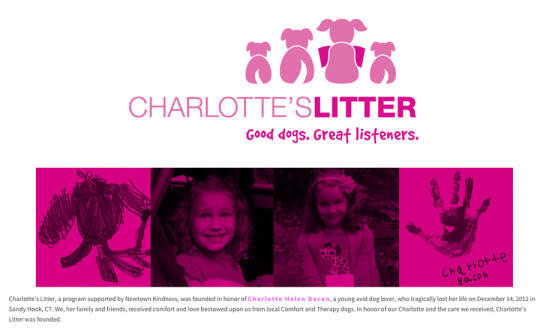On Sandy Hook’s Anniversary, How We Cope When Mass Shootings Keep Happening

A sign leading in to the Sandy Hook neighborhood in Newtown, Conn. (Photo: Getty Images)
It’s been three years today (Dec. 14) since Adam Lanza, armed with semiautomatic weapons and multiple rounds of ammunition, shot through the glass panels of Sandy Hook Elementary school, prowled its hallways, and ultimately killed 20 children, six staff members, his mother, and himself.
The 2012 event rocked Newtown, Conn., to its core. It was an otherwise idyllic New England community that had seen one homicide in the 10 years leading up to Lanza’s horrific act. The media descended upon the 28,000-person town that day and left just as quickly to move on to the next disaster — one of the 1,044 other mass shootings (defined as an event in which four or more people are shot) that have followed in Sandy Hook’s wake. Still, Newtown’s tragedy stands out as a particularly vile act. As the world moved on, the community has been left to grieve, heal, and pick up the pieces with which it was left.
“Life will never truly be back to normal for people who are impacted by these types of acts of mass violence,” Jamie Aten, co-founder of the Humanitarian Disaster Institute at Wheaton College in Illinois, tells Yahoo Health. “There will be a new normal. Recovery can take years, or it can take a lifetime.”
Related: Are Mass Shootings Really on the Rise — Or Do We Just Think They Are?
The new normal has settled into day-to-day life for the families of Sandy Hook’s victims in different ways. For some, the tragedy has sparked intense activism and advocacy to promote stricter gun control laws. The day after San Bernardino, Calif., couple Syed Rizwan Farook and Tashfeen Malik killed 14 co-workers and injured 21, several family members of Sandy Hook victims wrote an op-ed piece in USA Today, in which they described American gun violence as “harrowing monotony.”
“What should surprise — and horrify — us is that [firearms conglomerate] Remington actively promotes the AR-15’s capacity to inflict mass casualties,” the Sandy Hook families wrote in the op-ed. The AR-15 gun model was used in both the Sandy Hook and San Bernardino attacks. “In an era when mass shooters are often equipped with fatigues, vests, or other combat gear, this type of marketing is not only unethical, it also is reckless.”
It hasn’t been only gun control advocacy that has helped those in the community move forward, though. Some honor their loved ones in private, while others have found purpose by creating small, quieter movements.
After the incident in Newtown, people around the country were encouraged to perform 26 acts of kindness to honor the lives of the 26 people who were killed. The idea has endured three years later, with many schools in Connecticut and around the country conducting the 26 acts this month.
Related: 26 Acts of Kindness Honors Victims of Sandy Hook Shooting
Joel and Joanne Bacon, father and mother of Charlotte, their 6-year-old daughter who was killed in the shooting, took kindness advocacy one step further. They head up the organization Charlotte’s Litter, which pays homage to their animal-loving daughter. The mission of the program is to advocate and support therapy-dog programs by connecting those in need with resources. The Bacon family themselves received support through comfort and therapy dogs after the Newtown shooting.

Charlotte’s Litter aims to advocate and support therapy-dog programs. It was founded by Joel and Joanne Bacon in honor of their daughter, Charlotte, who died in the Newtown shooting. (Photo: Charlotte’s Litter)
“A big part of the healing process is finding purpose in helping others,” says Aten. No matter if the efforts are in the form of seeking legislation reform or simply helping a neighbor or friend in need, Aten says commitment to bettering one’s community, in any sort of way, is an important key to recovery.
Still, tragedies that mirror the past can often trigger families’ grief. Anniversaries like today and the holiday season are particularly difficult for many families and friends. Aten recommends that those struggling seek connection with others and find ways to honor those who have been lost. And if you are a friend of someone struggling, reach out to him or her. Be available to listen.
“A trigger can be anything — a person, place, or thing. It can be a sound, a song, some kind of a reminder, and that’s also when it’s important to turn to the coping skills that you’ve learned,” says Aten. In the case of San Bernardino or any of the other attacks, Aten recommends limiting media exposure if more anxious feelings than normal arise.
“The healing trajectory can be a very windy road, and anniversaries can trigger otherwise somewhat-resolved feelings and memories,” says Deborah Del Vecchio-Scully, who is a member of the American Counseling Association and a member of the Newtown recovery and resiliency team. “The important thing to know is that anniversary reactions are normal, so it’s important to seek connection. And if possible, try to balance the unhappy memories with the happy ones.”
Read This Next: Widowed at 33: A Lesson in Strength and Survival
Let’s keep in touch! Follow Yahoo Health on Facebook, Twitter, Instagram, and Pinterest. Have a personal health story to share? We want to hear it. Tell us at YHTrueStories@yahoo.com.
